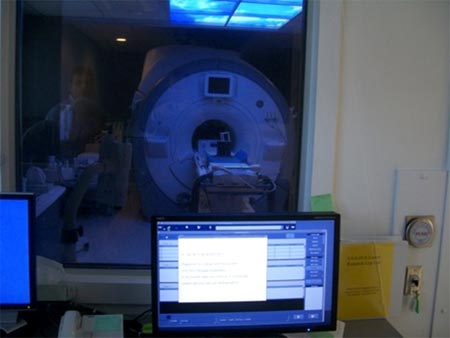
By Thomas Gentile, President and CEO of GE Healthcare
The following article is reprinted with permission from GE Healthcare.
When I was in India a few months ago, I first came across an exciting technology called Magnetic Resonance Guided Focused Ultrasound (MRgFUS). A doctor there was doing investigational research with it to evaluate its use in ablations of tumors.
Using MR scans to pinpoint a target in the body such as a tumor or a uterine fibroid, a doctor can direct a series of high intensity ultrasound beams (as many as 208) on the target to heat the tissue and kill the cells. It works kind of like a magnifying glass directing a beam of sunlight to a point which then becomes very hot.
One of the leading companies which makes the equipment to perform this technique is called InSightec, a company based in Israel. The CEO is Kobi Vortman. GE owns minor equity in InSightec, and Kobi and I had previously met at a conference and have had several phone conversations over the last several weeks. To help me learn more about MRgFUS, Kobi invited me to visit the University of Virginia to meet some of the doctors who have been doing research with the equipment and to see a demonstration.
Jim Davis, our MR business leader, and Curt Brueske, our Chief Counsel, joined me on the trip. Jim serves on the Board of Directors for InSightec. Here are Jim and Curt with Kobi outside the facility which houses a GE 750 3T MR scanner equipped with InSightec’s Exablate technology:
Using a standard MR scanner, the InSightec equipment to conduct the focused ultrasound therapy includes a special customized table where the patient lies. For body scans, the ultrasound transponder is built into the table. The University of Virginia also has a separate configuration for its research on potential therapies involving the head.
Here is a picture of the body unit:

The console in front is a standard MR workstation. The one on the left (which my terrible picture-taking cut in half) is the InSightec console which controls the ultrasound beam.
I took this picture just before we scanned a phantom, and had the chance to program the device to ablate a target within the phantom. Everything is done by remote control, and the procedure is completely non-invasive. Each burst of the ultrasound is called a sonication. A typical procedure might include between 60 and 90 sonications and take from three to four hours.
MR focused ultrasound has many potential uses, and researchers around the world are actively evaluating different indications. In the US, MRgFUS has FDA approval to be used to ablate uterine fibroids, which are non-malignant tumors in the uterus, in women who have completed child bearing.
For an outstanding description of uterine fibroids and their treatment, please refer to the article by our Chief Medical Officer, Jeff Hersh, from two weeks ago:
As Jeff describes in his article, there are several ways to treat uterine fibroids. An invasive technique is a full hysterectomy or removal of the uterus. A minimally invasive technique is a procedure called a uterine artery embolization, which uses a catheter to cut off the supply of blood to the fibroid.
MR guided focused ultrasound is a non-invasive approach. I had the chance to speak to Dr. Alan Matsumoto, the Chairman of the University of Virginia Radiology department who is himself an Interventional Radiologist who has performed around 20 MRgFUS on uterine fibroids. He was very excited about the procedure and we talked for almost an hour about his experiences using it and how he sees it developing in the future.
While we were at the University of Virginia, Jim, Curt and I also had the chance to observe an actual procedure that was part of a research project. The results were very encouraging and we expect to see some papers in the future on this application of the technology. I would write more, but I do not want to steal the thunder from the doctors at the University of Virginia.
In general, non-invasive interventional procedures like MR guided focused ultrasound are growing rapidly and have the opportunity to reshape healthcare in the future.
